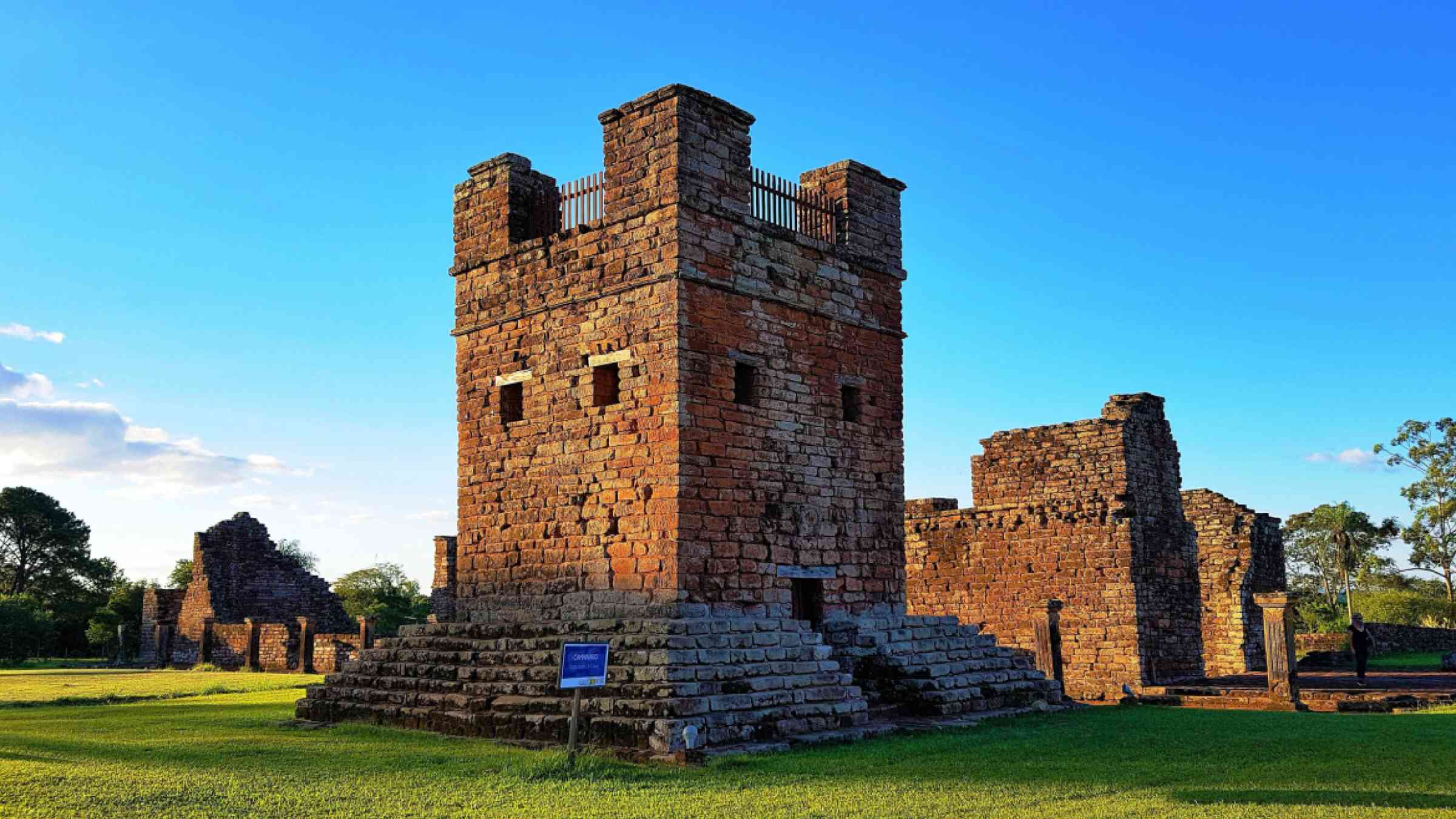Paraguay achieves inter-institutional commitment to risk management in the Jesuit Guarani Missions

Asunción hosted on 6 August the presentation of the initial results of the project 'Design and implementation of the Risk Management Plan for the Jesuit Missions of Santísima Trinidad de Paraná and Jesús de Tavarangüe, World Heritage site in Paraguay', financed by the Netherlands Funds-in-Trust and implemented by the National Secretariat of Tourism-SENATUR and UNESCO Montevideo, in coordination with the Latin America and Caribbean Unit of the UNESCO World Heritage Centre.
The participation of the National Secretariat of Culture and other national and local stakeholders in this process was fundamental in the framework of the technical assistance project for the elaboration of a risk management plan for the Jesuit Missions of Santísima Trinidad de Paraná and Jesús de Tavarangüe, a site included in the World Heritage List since 1993.
'This document is intended to be a National Risk Plan due to the responsibility that all Paraguayans have towards World Heritage and the different risks that have been identified and those that will continue to be added,' said Paraguay's Minister of Tourism, Angie Duarte.
The work carried out for the preparation of the risk management plan document through various workshops and training sessions lays the foundations for a long-term inter-institutional commitment between SENATUR and the National Secretariat of Culture-SNC, as well as coordination with local and departmental governments and other key institutions of the central administration, such as the Ministry of Environment and Sustainable Development, Ministry of Foreign Affairs, National Emergency Secretariat, National Institute of Indigenous People, Armed Forces, National Police, INTERPOL Paraguay, among others.
This cooperation will continue in the future to further develop risk prevention and risk management protocols that will prevent or reduce the negative effects of potential disasters on the World Heritage property and thus protect its outstanding universal value.
In this sense, the Minister of Culture, Adriana Ortiz underlined the relevance of the project implemented in view of the need to 'continuously promote and coordinate this type of action to preserve this world heritage that distinguishes us as unique'.
Subsequently, on 8 August, two presentations of the results of the project were held in the Mission of Jesus and the Mission of Trinidad, respectively, in the presence of national authorities from SENATUR, local authorities and officials from the Missions, as well as members of local communities, civil society, universities and the Church.
During the event, a message was delivered by Elma Stoffelen, Head of Policy, Press and Culture of the Netherlands Representation in Buenos Aires, who stressed: 'The identification and mitigation of risks is key to the management of world heritage and for this reason we are grateful for the cooperation we have with the State of Paraguay for the implementation of this project and for the participation of other state agencies'.
Alcira Sandoval Ruiz, Culture Specialist at UNESCO's Regional Office in Montevideo, said that 'with this project, Paraguay is fulfilling one more of the requirements established for the proper conservation of the site' and thanked the national consultants and the international consultant in charge of the implementation of the plan in coordination with the counterparts.
The project has also enabled the preparation of a carrying capacity study at the World Heritage site, as well as a climate change impact study, relevant documents that complement the risk management plan and align with the provisions of the 2014-2024 Action Plan for World Heritage in the Latin America and Caribbean Region and the Policy Document on Climate Action for World Heritage.
A second stage is planned, in which working groups will be held to elaborate protocols for action and responsibilities with the partners who have participated in the process.
The project's consulting team was made up of Francisco Vidargas, Bettina Bray and Edgar García.